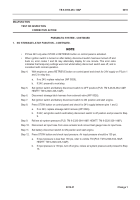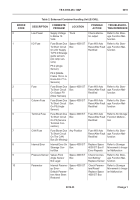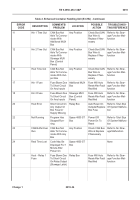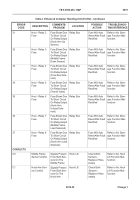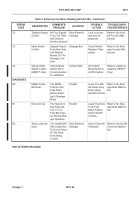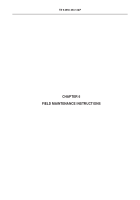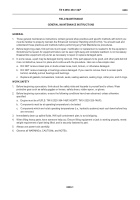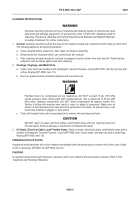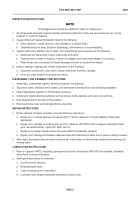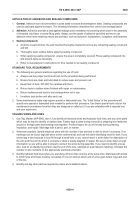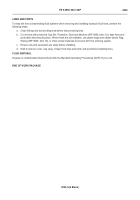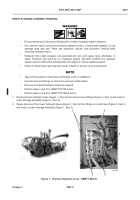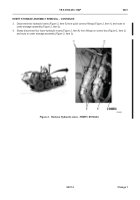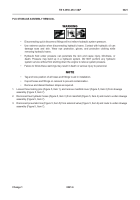TB-9-3950-253-13-P
PALLETIZED LOAD SYSTEM TRUCK, M1075 and M1075A1 (PLS) AND HEAVY EXPANDED MOBILITY TACTICAL TRUCK, M1120, M1120A2, AND M1120A4 (HEMTT), ENHANCED CONTAINER HANDLING UNIT (E-CHU)
TECHNICAL BULLETIN; OPERATOR AND FIELD MAINTENANCE, INSTALLATION INSTRUCTIONS, AND REPAIR PARTS AND SPECIAL TOOLS LIST
JULY 2009
TB-9-3950-253-13-P - Page 221 of 704
0020-3
TB 9-3950-253-13&P
0020
INSPECTION INSTRUCTIONS
00020
NOTE
All damaged areas should be marked for repair or replacement.
1. All components and parts must be carefully checked to determine if they are serviceable for use, can be
repaired, or must be scrapped.
2. Inspect drilled and tapped (threaded) holes for the following:
a. Wear, distortion, cracks, and any other damage in or around holes.
b. Threaded areas for wear, distortion (stretching), and evidence of cross-threading.
3. Inspect metal lines, flexible lines or hoses, and metal fittings and connectors for the following:
a. Metal lines for sharp kinks, cracks, bad bends, and dents.
b. Flexible lines or hoses for fraying, evidence of leakage, and loose metal fittings or connectors.
c.
Metal fittings and connectors for thread damage and worn or rounded hex heads.
4. Inspect castings, forgings, and vehicle metal parts for the following:
a. Equipment surfaces for nicks, burrs, raised metal wear, and other damage.
b. Inner and outer surfaces for breaks and cracks.
DISASSEMBLY AND ASSEMBLY INSTRUCTIONS
00020
1. Keep major components together whenever possible and practical.
2. Tag hoses, tubes, electrical wires, cables, and harnesses to identify them and aid during installation.
3. Keep related parts together for identification purposes.
4. Temporarily install attaching hardware such as screws, bolts, washers, and nuts to prevent loss.
5. Only disassemble to the point of the problem.
6. Ensure parts are clean and lubricated before assembly.
REPAIR INSTRUCTIONS
00020
1. Repair castings, forgings, and parts using the following instructions:
a. Repair minor cracked castings or forgings IAW TC 9-237,
Operator’s Circular Welding Theory and
Application
.
b. Repair minor damage to surfaces with an Cloth, Abrasive (WP 0060, Item 5) dipped in detergent Deter-
gent, General Purpose, Liquid (WP 0060, Item 6).
c.
Replace any deeply nicked surface that could affect the assembly operation.
d. Repair minor damage to threaded capscrew holes with thread tap of same size to prevent cutting oversize.
2. After repair, thoroughly clean all parts to prevent dirt, metal chips, or other foreign material from entering any
working parts.
LUBRICATION INSTRUCTIONS
00020
1. Refer to
Operator
PMCS, Including Lubrication Instructions Introduction
(WP 0015) for detailed, illustrated
instructions on proper lubrication.
2. Some general practices to remember:
a. Use the correct lubricant.
b. Keep lubricants clean.
c.
Clean all fittings prior to lubrication.
d. Lubricate clean disassembled and new parts to prevent rust.
Back to Top

